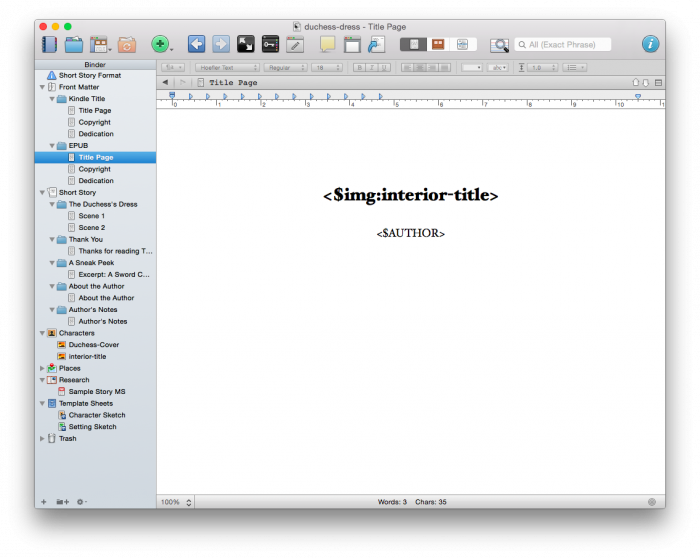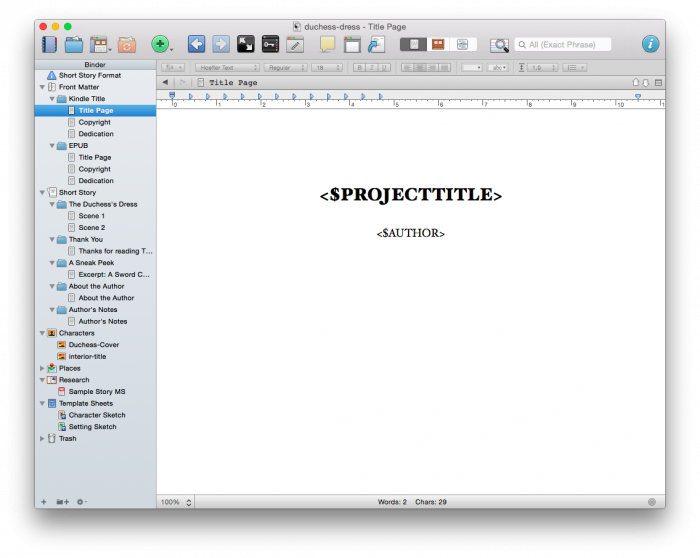Archive of posts with tag 'books'
Jan 2015: Update on Kindlegen and PNG Rendering
As an example of the classic “always ensure your software is updated” mantra, I had the latest kindlegen installed, but Scrivener was pointing to an older version of kindlegen I’d installed Somewhere Else.
The specific PNG rendering bug I showed was fixed in between those two versions.
All other points remain valid, though.
So, feel free to include PNGs in your Scrivener projects. You’ll get a nasty ugly background, but at least it’ll be one that doesn’t look like a bad frame freeze of a logo from an early episode of Soul Train.
Jan 2015: There's Bad Rendering, and There's Atrocity
So, having admittedly not gotten the memo about transparent PNG graphics on Kindles, I tossed a transparent PNG into my Scrivener project.
And compiled for Kindle, which meant massaging the whole thing through Kindlegen.
Et voila.
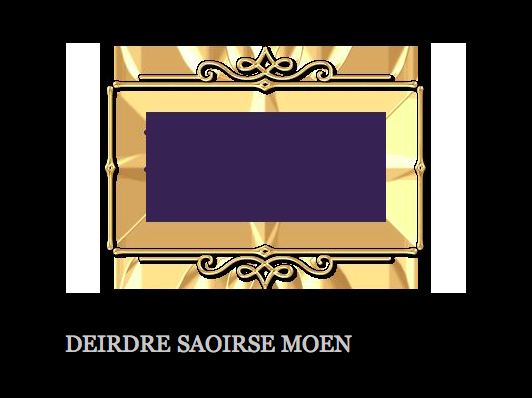
What. The Actual. Fuck.
Compare with the PNG I added to the project:
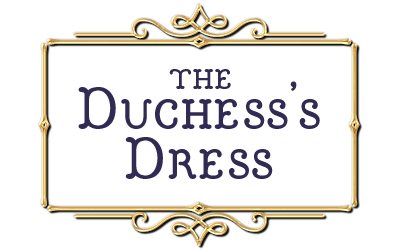
I can kind of see what it’s doing: it’s creating a non-transparent background out of the nearest adjacent colors.
Transparent GIF: Also Nope
I thought, “Haha, well, there’s always GIF, right?”
Nope. Transparent GIF renders with a black background. Which, since I read with a black background, I thought I’d won the internet at first. Then I switched to a white background. Oops.
So What Are Your Options, Then?
JPEG, which has no transparent background, is probably your best bet if you want to stick with images. Generally, a JPEG file will be smaller than a PNG anyway.
Catch is, most e-reader apps offer: white background, black background, and some ivory background. There is no standardization, however. One app’s white may not be another’s.
So my recommendation for that would be to look at using a background color that permits high contrast (for the non-color e-ink devices) but still looks good on white, black, and sepia. A pale warm grey, for example.
Your other option is not to use an image at all for Kindles.
But If I Don’t Use an Image on Kindles….
Yes, that’s exactly right. Your compile process will be more complicated.
So let’s look at the workaround for, say, an image title on the book’s title page.
- Duplicate your front matter folder (or document; some people put most of the typical front matter at the back).
- Edit the Title so that the non-Kindle version uses an image. (Yes, you could also make a different image for Kindle, that works too.)
EPUB Title Page
Kindle Title Page
Compilation Step
For Kindle, select the Kindle frontmatter folder:

And for EPUB, the EPUB frontmatter folder:
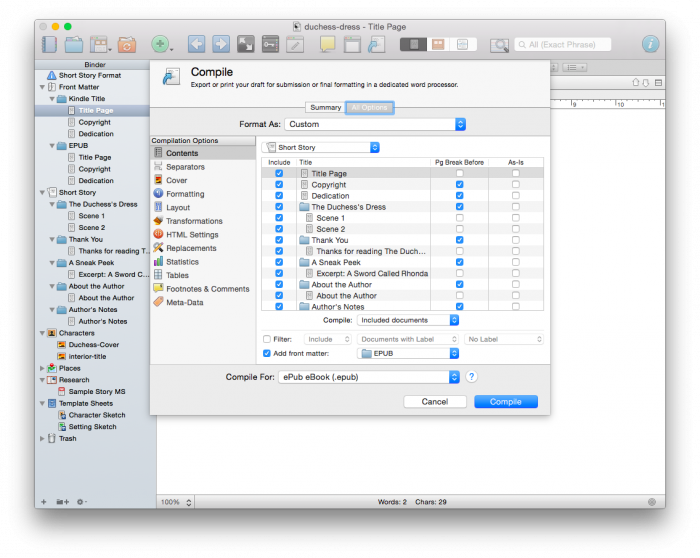
But…Complicated!
In an ideal world, you’d have a backmatter folder for each different market, too, but I’ll go into that at a later time.
One More Tip
If you keep the names of certain files the same across multiple projects, e.g., your interior title pics always have the same filenames, then you can save those compile settings once and use them across multiple projects.
Not so complicated after all, right?
Oct 2014: How to Unpublish a Book from iBooks
So you’d figured out how to sell your book on iBooks. Now you’ve got a different problem: what if you need to remove your book from sale?
There’s been an assertion that this is a difficult thing to do.
Not so much.
With iBooks, You Publish Via an App
I use iTunesProducer to package and upload my book and make it available for sale. It makes a manifest file around the EPUB that includes product and sales information, then saves it in your iTunes Playlists. (Yet another WTF? from Apple, albeit a minor one.)
However, so far as I can tell, you can’t remove it from sale that way.
There’s a reason for this, I suspect. Since someone who’s purchased the book has the right to redownload their purchases, that means that Apple’s system still need to keep that record of you having published it even if you are no longer the publisher of record for new sales.
Use iTunesConnect to Stop Selling
Here’s the https link.
Log in, and you’ll see this home screen. If you haven’t logged in in a while, it has changed.
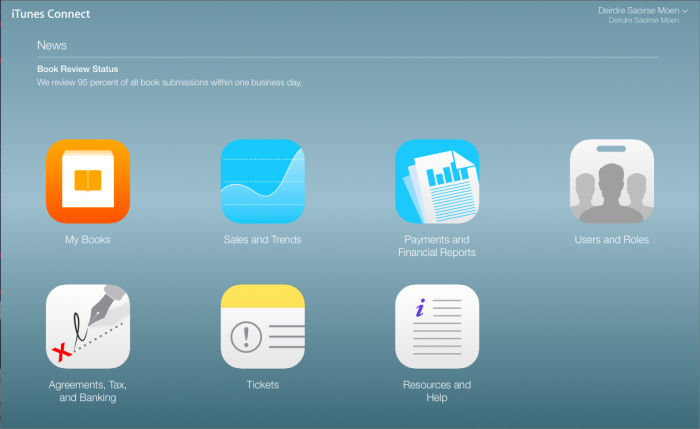
Click on My Books. A publisher with a lot of books will need to use the search page. I, uh, don’t.

Click on the relevant book and you’ll get the book page.
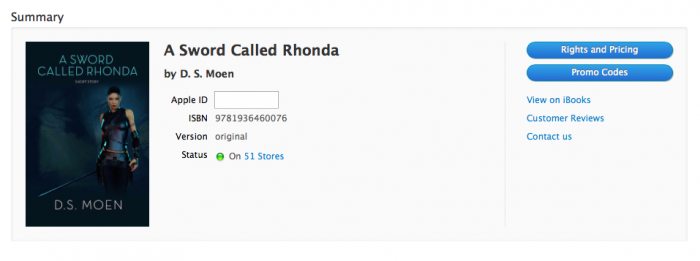
Click on the Rights and Pricing and you’ll get the sales territory management page.
Click the Select All button above the pricing matrix.
Select No next to Cleared for Sale on the top form.

Scroll to the bottom of the page and click Continue.

There’s probably another step or two, but I don’t happen to want to take my own iBooks items off sale for this experiment.
Still, it’s just not that difficult.
Aug 2014: Reading Audiobooks
For years, I never really thought about what verb to use when reading audiobooks. I discuss my shift in verb usage from “listen” to “read.”
Mary Robinette notes some good things for the future of audio-first books:
Woot! The motion to make audio books officially part of the Hugo fiction categories passed. Still needs to be ratified, but Yay!
— Mary Robinette Kowal (@MaryRobinette) August 16, 2014
Last year, she was disqualified for Best Novelette in last year’s Hugo Awards because it was audio first and the posted story on her blog had some small staging directions. Thus, the administrators ruled it would qualify in Best Dramatic Presentation, Short Form. Sadly, it lacked the number of votes to make the nominating cutoff in that particular category.
This year, it was published on Tor.com and won Best Novelette.
A few months ago, I had a conversation on Twitter with Colter Reed. He said he’d “read” an audiobook, and the usage stuck out to me.
I realized today that I have only read the abridged audiobook of @EntreLeadership. Just bought the full book.
— Colter Reed (@ColterReed) March 23, 2014
@csreed I still can’t reconcile “read” and “audiobook.”
— Deirdre Saoirse Moen (@deirdresm) March 23, 2014
@deirdresm I decided to just use read for consistency and simplicity. Audio-, digital, or paper… it’s all read.
— Colter Reed (@ColterReed) March 23, 2014
@deirdresm Though some prescriptivists will likely cringe.
— Colter Reed (@ColterReed) March 23, 2014
@csreed I’m not one of those, just hadn’t really thought it through. It’s a book regardless. You’re right.
— Deirdre Saoirse Moen (@deirdresm) March 23, 2014
@deirdresm Now that I check M-W, I think it fits. 1a mentions sight and touch, so it isn’t just visual. http://t.co/3PC0tFCFne
— Colter Reed (@ColterReed) March 23, 2014
Audiobooks are really taking off, and a lot of people read them. (See what I did there?)
I’ve moved away from them myself, for various reasons, mostly that I tend to remember books better when I read them by eye rather than ear.
I’m very aware, as my very literate father’s eyesight has degraded, that reading a book with one’s eyes is a privilege not everyone has.
Some people prefer audiobooks for other reasons, like making a long commute easier.
Still, it’s a book—or a story—and we “read” those.
Accordingly, my usage of the term “read” has changed.
Jul 2014: "The Duchess's Dress" Is Now Live
Behold, there it is. Available in EPUB formats (for iPad/iBooks, Nook, Kobo, and most other devices) and Kindle (MOBI) format.
It’s been uploaded to other vendors, but isn’t live at any of them yet. I’ll update the book’s page when it is.
Jul 2014: Marion Zimmer Bradley: Artist vs. Art
There have been some super-interesting conversations about Marion Zimmer Bradley’s work in the context of larger discussions on the artist vs. their art. I think we all know that all artists are flawed, but clearly some flaws are larger than others.
For those of you who don’t yet know, I broke the news about Marion Zimmer Bradley‘s child abuse of her daughter Moira last month.
I haven’t heard the artist vs. art argument said quite this succinctly, so I’m quoting Broomstick from The Straight Dope boards:
When evaluating a novel it doesn’t get better if the author is a saint, and it doesn’t get worse if the author is a sinner, it’s the same book either way.
Every art contains, to some extent, the artist’s worldview. How could it not? And yet it is a thing distinct and unto itself, though with a context. The meaning you read into it depends on the context you bring into it, too.
And the context you miss depends upon your own life context, too.
When I was 11, Jane Fonda’s movie Klute came out, and my parents took me with them. I can cheerfully say that most of the movie went “whoosh” right over my head. If I saw it today, I’d see a completely different film.
It’s that old Heraclitus quote:
No man ever steps in the same river twice, for it’s not the same river and he’s not the same man.
And that may be one reason not to re-read a previously-loved book, like a Darkover book or Mists of Avalon, after finding out Marion Zimmer Bradley’s failings.
Because the context is different for you even though the book hasn’t changed.
And then there’s the other killer comment, from ShipperX on LJ:
With MZB it’s the sexual nature of her work combined with the sexual nature of her atrocities that has me backing away. ::shudder::
Yes. That.
Jun 2014: Using Contests for E-Book Covers
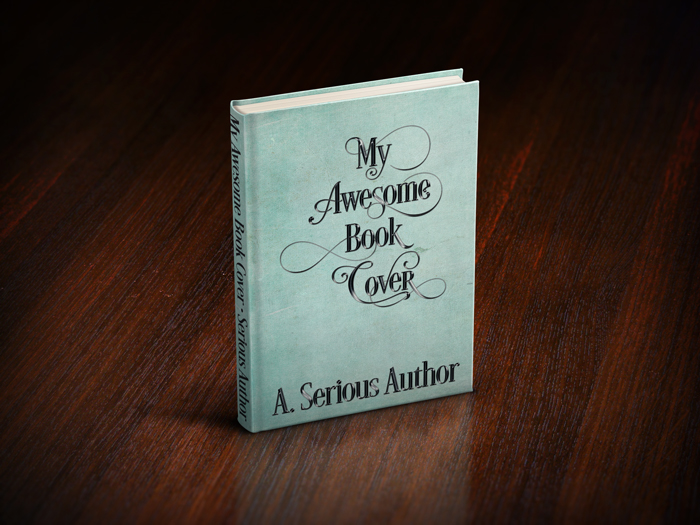
The subject of using contests (like 99 Designs) for making e-book covers has created huge controversy in the graphic design world, including complaints of driving down prices, etc.
My own feeling is that not every designer works the same way, and e-book contest covers can be a compelling way to get a decent cover at an affordable price.
Below is a comment I submitted to this post on Joel Friedlander’s blog, The Book Designer, about using contests for e-book covers.
I’m a writer who has, in the past, done graphic design for a living—everything from layout to burning plates and occasionally minding the paper folder. Catch is, that was the 80s, and it’s a huge technology shift that I haven’t kept current on. In the 80s, I joined a consultancy that had a mix of software engineering and graphic design clients, though we also did some music-related stuff for a gaming company.
At one point, my partner and I decided that we were too unfocused and we should concentrate on one thing, so however we earned the most money in the next six months would narrow our focus. We made more money in software engineering, thus gave up the design part of our business. In retrospect, I think that was a mistake.
In between software gigs, I did still work in graphic design on occasion, though not through the partnership. After the company folded, I went back to graphic design for several months before heading off to Ireland. I was burned out and fried, and working on setting travel agency ad copy and laying out restaurant menus was far less stressful. I was the first to use the new typeface Lithos for Mexican restaurant menu design (for El Torito), and every time I see another Mexican restaurant using the face, I smile. It may be a super-small trend I set, but it was a move away from more stereotypical ethnic typefaces.
I’ve done cover designs on 99designs. Never won a gig, but I’ve been in the final round several times (mostly for hidden contests). I get asked to submit designs every now and again.
There are good and bad things about it, so I’m going to be frank with what I feel works and doesn’t work about 99 designs—and why I bother to do it at all.
First, I’m not an illustrator in any sense of the word. I’d love to have that skill, but not so much that I take the thousands of hours it’d need to really develop it. I’m really, truly at the “daisies like a six-year-old draws” stage of illustration skill. After I get my current book done, it’s actually part of my commitment to myself that I’m going to learn how to draw better as well as finally learn Illustrator.
I view the contests as “Photoshop homework where I have a risk of making some money.” That’s it. I’m looking for a challenge as an artist: what do I feel I have to say about this topic? And what can I challenge myself to learn? Also, do I have a photo that I think works for this?
Especially where there are photo-based covers, sometimes 99designs can feel like a race to find the killer stock art. For Tim Rymel’s forthcoming book Going Gay, when I saw the artist submit the winning cover, I inwardly folded. What I’d found was nowhere near as good. Tim obviously agreed, as he ended the contest early. Could he have gotten a better cover? Possibly. But I think it does an awesome job. In that contest, only a handful of designs were submitted.
The other extreme I’ve seen is where the client just keeps chewing up designer time. This contest had a mind-boggling 1265 entries. But, because they were paying $450 (rather than the more typical $200 or $290), people kept on submitting. I don’t want $450 that badly; I’m so glad I was eliminated early. I’m guessing the winning designer probably earned around $2 an hour.
Another problem is the person who’s self-published a book with an awful cover, then comes back to get a better one when their book isn’t selling. Catch is, if their taste was that appalling to begin with, it isn’t much (or any) better now. They’ve only decided it’s worth spending (more) money for. For you great designers out there, these people were likely never your customers. They’ll often reject good design. The beauty of 99designs for these kinds of situations is that you can look elsewhere for how you make your money. There are plenty of people willing to be awful for the client.
Look, I get that those of you who are real designers for your day job feel that these contests are a threat. And those of us who design a cover every now and again when we have the time aren’t really in your business at all. I’m far more interested in the one-off client where there’s no future implied obligation because I’m a writer first and designer second. You generally would prefer to have repeat business or at least referral business.
For those of us who find this kind of thing a bizarre form of entertainment, one of the reasons I do it is to hone my sense of design. To play with my font library. To try to figure out how someone else did something and have a go at it myself (not to knock off the design, but just to learn). To see what I like (and don’t like) about other people’s entries, and try to articulate why it does or doesn’t work for me. For me, that’s what the real benefit is: not the money, but the education.
One of the things I’ve had to spend a lot of time on is documenting the rights I have. Do I have rights to use this in a commercial project?
Speaking of fonts, I’ve learned how much of a font freak I really am. When some unexpected money came my way, I decided to go to TypeCon in July. Their program and workshops sound fabulous. So that’s a direct result of 99designs contests.
Almost every penny I’ve earned this year is as a designer. (I’ll have books out later this year, and I expect that, at year’s end, design will only be a minor part of my income. One hopes.) Did I design my own covers? Yes I did. Ultimately, that’s why I’m doing this: so I can do a better job for myself. Even if I get to where I think hiring someone else is a better choice, I will be better working with a designer because of my experience.
Until then, I’ll just write every day, publish books when they’re ready, and sell a bunch of t-shirts and the occasional clock or shower curtain.
Note: Book mockup template in header by Picseel.
Jan 2014: A Few Book Covers
Things coming out Real Soon Now, in probable release order.
Coffee & Canopy
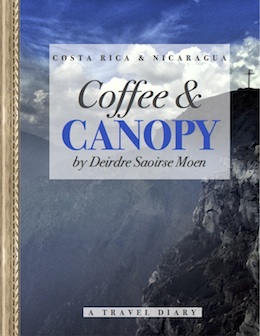
Coffee & Canopy is a forthcoming book about our experiences in Costa Rica and Nicaragua. Monkeys! Crocodiles! Bats! Venomous sea snakes! Volcanoes! Cover photo is one I took of Nicaragua’s Masaya volcano.
The “travel diary” series will be novella length, have selected color photos (as well as the occasional black and white), and will be digital only. I’ll also have PDF as a format option for this series. Price will be $2.99.
So You Want to Travel the World
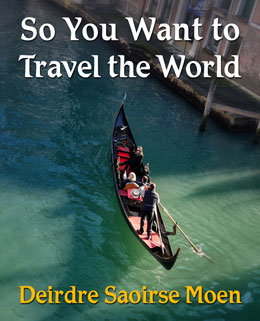
Would you like to travel more? See the world? Get discouraged by how many things there are to do and see? So You Want to Travel the World will help you divide and conquer the problems so you can get more of your travel goals accomplished. The cover photo was one I took in Venice, Italy in December, 2011.
This book will be in both digital and print. Pricing will depend upon final size, so I’m waiting to announce that.
Deep Pacific
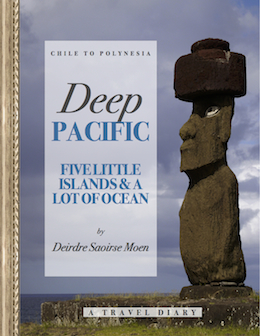
Deep Pacific will chronicle our journey from San Francisco to Valparaiso, Chile to Easter Island, Pitcairn, Moorea, Tahiti, Bora Bora, and finally back to San Francisco. The cover photo is one I took on Easter Island.
This is also a digital-only member of the “travel diary” series. Price will be $2.99.
For more titles coming out later in the year, see my home page.
Jan 2014: Bora Bora
Dec 2013: January Indie Monday: Francesca Forrest's Pen Pal
January’s Indie Monday book is Francesca Forrest’s novel, Pen Pal. An excerpt is linked from this page.
Em is a twelve-year-old girl in a floating community off the Gulf Coast. Kaya is a political activist in a terrifying prison. They are pen pals.
Em’s wistful message in a bottle finds its way to Kaya, imprisoned above the molten lava of the Ruby Lake. Both are living precarious lives, at the mercy of societal, natural, and perhaps supernatural forces beyond their control. Kaya’s letters inspire Em, and Em’s comfort Kaya—but soon this correspondence becomes more than personal. Individual lives, communities, and even the fate of an entire nation will be changed by this exchange of letters.
Pen Pal is a story of friendship and bravery across age, distance, and culture, at the intersection of the natural and supernatural world.
She had me at volcanoes.
Have my copy in hand, can’t wait to read it!
Dec 2013: Scientology Says I'm a Suppressive Person
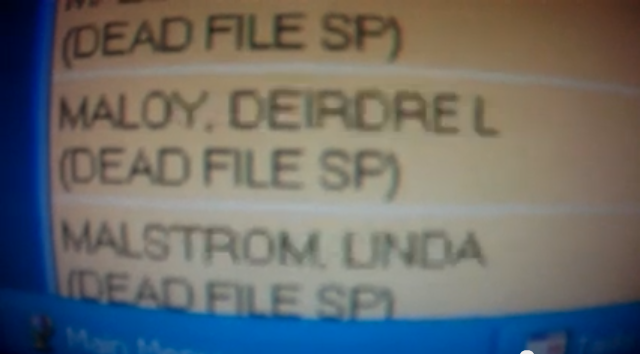
As if you didn’t know that already.
This is the first time I’ve actually had documentation of it, though. (“Dead File” simply means “Do not contact this person (treat them like they’re dead).” SP means “Suppressive Person.”) Apparently full SP list can be found here and in related videos.
I’d actually intended to change my surname a few years earlier than I actually did, and I’d gotten into a fit of Celtic pride after taking some Irish lessons in Hollywood back in the day. When I actually tried to figure out what to change my surname to, well, the Irish form of Maloy (Ní Mhaolmhudhaigh) was too unwieldy, so I picked a first name.
Saoirse means freedom. (Moen is Rick’s surname. Like the Borg, I added his distinctiveness to my own.)
In this case, it was a meta commentary about my life: I was free from the trap of selling freedom to people who were freer before than they would be after.
Events that have occurred recently have had me thinking: should I write a book about my time in Scientology? I came up with a great title for it yesterday. I’m only going to reveal one word: Firebrand.
I never had the experience of Marc Headley, who got run off the road trying to escape from Hemet. I still shudder to think I could have wound up there. Wanted to, in fact.
To my knowledge, I was the first person for whom Scientology used its resources to out me on the internet. (timeline here)
There are — a lot of things I wouldn’t say outside a book. Like why “firebrand” is the right word in the title. Or why writing a book makes me shake, even oh so many years later. Or why you might think less of me once you’d read it. Or, weirdly, why you might think more of me in ways that would make me uncomfortable.
I left because I didn’t like the person I’d become. It was alien — and antithetical — to the person I wanted to be. It wasn’t a problem Scientology could solve, but it was one they could create.
I have a story, though, one that’s far more interesting than I’ve been letting on. (For those of you who know the details that I’ve only told trusted people face-to-face for the past 20 years, I ask that you keep my confidence just this little while longer.)
Back in the day of the ScienoSitter, when Scientology secretly installed internet filtering software on Scientologists’ computers under the guise of letting them build their own pro-Scientology web sites, “Deirdre” was one of the banned terms. Web pages with my name in them were secretly unavailable. Some of those web sites still exist; Robin Rowand, who got me into Scientology (along with her husband) still has hers up.
I’m. Just. That. Awesome.
My story is also related to the reason that XKCD 386 is my license plate.

So. My question: is that a book you’d be interested in reading?
I wrote the rest of this post July 2, 2010, after a visit to where I’d been staff for several years, back when we decided to go visit the old stomping grounds for grins. Yeah, we punked them.
Talk about your surreal. Friend of mine and I headed down to Tustin to the grand old corner of Irvine and Red Hill to see how the old place (where we’d both worked) was.
First of all, the parking lot is really ratty. These people, if they want to sell that building, need to make it less of an albatross. Paint was peeling all over and it almost looked like it hadn’t been painted at all since I was there last in 1990.
When I walked in the entrance nearest reception, two people were standing there and one asked what I needed (very friendly, though) and led me to one place. I said I didn’t know if I was declared a suppressive person, I’d emailed ahead of time (by a day), and I was coming in to find out my status. You think this might make them unfriendly, but it didn’t. After all, one of the steps to being recovered is paying $BIGBUCKS and there I was on Thursday morning, almost as if I knew that stats were collected on Thursday at 2 and they could use the income.
So we got led to the “special people” reception, who then led us to Ethics reception. Unfortunately, the Ethics Officer was busy, so we had to wait in the special ethics reception (yes, so far I’ve been in three reception areas within a span of 10 minutes. Such is Scientology — everyone’s busy sending people places to wait.)
Someone popped in, looked at me, did a double-take and said, “You’re….” As soon as I heard the voice, I recognized her. She’d not aged well, looked quite wrinkled, and her hair had gone from jet black to light grey, but I had worked with her for 8 years, just not closely.
“Deirdre.”
“Wow, I haven’t seen you in a long time.” So we chat for a while.
This is repeated twice again with other people, the final person being the guy who now runs the place, Ed Dearborn. He was in his early 20s when he joined staff there, meaning he’s now somewhere between mid-40s and maybe as old as 50 (I can’t quite remember how long we worked together).
The Ethics Officer came out, she was a cute 20-something, obviously someone I’d never met except perhaps in infancy, and was very polite. I wrote down my name, my old post, my dates of employment, and my senior’s name and dates of employment. She went away for a loooooooong time (30-45 minutes, it seemed like), and then came back with a single sheet of paper.
“Your ethics file is not here.” That must have saved 2-3″ in a filing cabinet. 🙂 “There is, however, a note that you were declared, but I have no copy of that declare.” Later, I thought: they aren’t cleared for my level of suppression. Probably literally.
The piece of paper was my old boss’s suppressive person declare, a scant one page long. Now I’ve read some really lurid ones of these, including specific sex acts, and all kinds of details that were mostly fabricated, running on for pages and pages.
I felt kind of sad for my friend — he was accused of exactly one thing, which he apparently did do, and nothing else, making it seem like he was insufficiently important for a lurid declare, nor was it probably credible that he’d actually done anything lurid. He’s one of those steadfast kinds of people, though. Very nice guy.
After that, we went to a location Google maps told us was Scientology in Santa Ana — a warehouse of unknown purpose, and the new “Ideal Org” building in downtown Santa Ana had a water disconnect notice (for $1400+ for an empty building, no less). The notice had been there for three weeks, apparently unnoticed by anyone at the org.
Speaking of the Ideal Org campaign — essentially, each org, even those that own their buildings clear (as Orange County has in the past), was too ratty, and thus there’s a campaign to raise money to get historic buildings, glossy interiors, and this is funded by fundraising from affluent Scientologists. The highest contributors are called, get this, “humanitarians.” That will explain one of the photos in the set below.
Note: April 1 2015, I’ll finish reposting the photos later today, but here’s the “humanitarian” one.
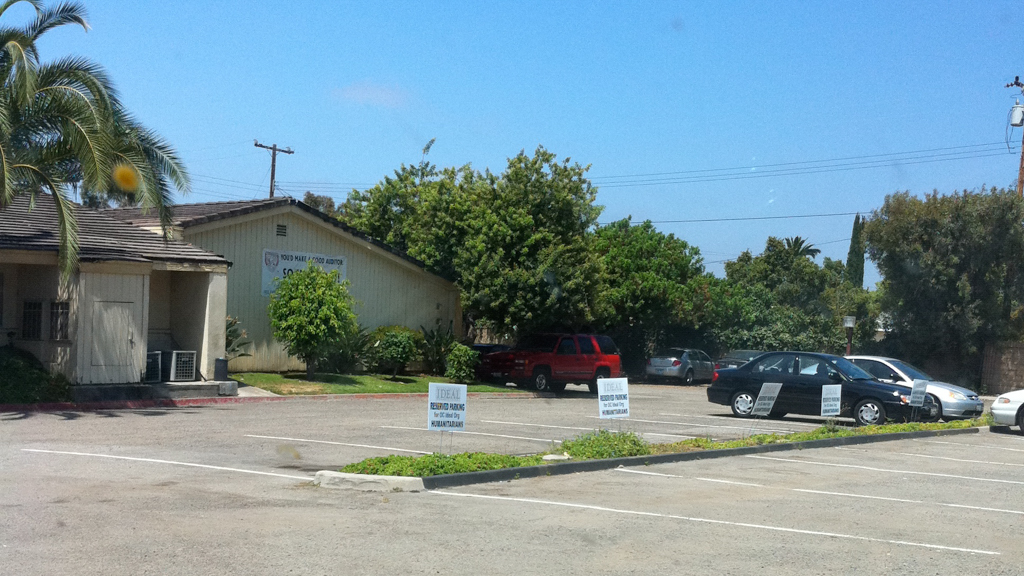
Dec 2013: First Mondays Are Indie Book Mondays
We all hate Mondays a little bit, right? It’s always like spring back Daylight Savings Time. Week after week after week.
Until now.
Once a month, on the first Monday of the month, I’ll post some of my comments on your indie published book. Well, someone’s book. Maybe yours. But only if I like it. Which means I have to know about it.
Here’s the rules:
- You must have a web site. I don’t care if it’s for you as an author or the book (or the series of books).
- There must be an excerpt of your book on your web site. ~2 pages (500 words) is a good start.
- There must be a link that offers a downloadable sample (e.g., through iBooks). I’m sample girl. The book must be available somewhere in EPUB format. I don’t read on a Kindle or with the Kindle app, and I don’t read paper books any more.
- If it’s part of a series, I’m only interested in the first book.
- Your book must have been published for the first time within a year (to the nearest month), but must be available on the posting date. So for the Jan 6, 2014 edition, anything published between Jan 1, 2013 and Jan 6, 2014 is fine.
- It must be in a genre I read. (See below.)
-
How to be considered:
a. Email me: indiemonday@deirdre.net (spell carefully). Deadline is two weeks before the post date, so Dec 23.
b. Make sure you list your web site, book, and its publication date.
c. Note that I will actually look at your excerpt and, if I like that, your sample. And, if I like that, I’ll have a go at the rest of the book.
d. Your book doesn’t get picked unless I like it.
e. If you leave any of the necessary bits out, I will probably not approve your comment. (At this time, all comments are moderated unless you have a previously-approved comment.)
- Even if I don’t pick your book, if I find you have an interesting-sounding excerpt that isn’t quite my thing, I may give you a shout-out in the Indie Monday post.
- Women writers, writers of color, LGBT* writers are all encouraged to participate.
- If I don’t feel that I’ve found an indie published book via your submissions of your own work that I’d love to give a shout-out to that month, I’ll still post about an indie book, just not one that was submitted. This is a last resort, though.
Anything I didn’t cover? Feel free to ask questions below.
What I Like to Read
Science fiction, fantasy (except of the good vs. evil sort), paranormal romance, romance (any heat level), mystery, travel essay.
I like funny books and upbeat endings and complicated plots, but none of those elements are required.
What I Won’t Read
Horror of most kinds, lifestyle BDSM, Christian-themed books, tragedies, strenuously dramatic works, overly derivative works, and erotica that’s too out there for publishers like Samhain.
Nov 2013: So You Want to Travel the World
Hi, I’m Deirdre.
As a kid, I was given a globe, and I was fascinated by it. I kept imagining that I would go to all these wonderful places, especially the islands where all the lettering squished together on the globe. Or weird places like Ifni, which was on my globe and existed for only 11 years as a separate province.
For years, I traveled for business only, and I was able to travel to several continents. I wanted to travel for pleasure and had a long list of places I wanted to visit, but no real idea of how to make things happen. So many places to go. So many things to see. Learn how to reduce the possibilities to a manageable list, then how to plan your trips.
Then, earlier this year, I had a once-in-a-lifetime trip planned. Eight days before I was due to leave, I had a wrench thrown in my plans and had to either a) scrap the trip entirely, b) have it suddenly cost thousands of unplanned dollars more; or c) change my trip so fundamentally that it no longer resembled what I originally planned. Learn coping strategies for adversity.
It’s a big world. Let me help you get out there.
My Background
While I’ve primarily been a software engineer most of my life, most recently at Apple, I’ve also worked in the travel industry.
For (now defunct, but not my fault) Eastern Airlines, I was a reservationist with the group booking desk, planning trips for the Caribbean and northern South America. You can see an old Eastern Airlines route map here.
I’ve also worked in several capacities on several cruise lines, mostly Premier Cruise Lines (also now defunct, but also not my fault), from purser to medical records consultant to computer consultant–also mostly in the Caribbean.
More recently, I worked in reservations at (the still existing, yay) Classic Vacations, the luxury division of Expedia. Like everyone, I started on the Hawaii desk, booking custom air-and-hotel packages for travel agents’ clients. Then I expanded to the other locations they had at the time: Mexico, Canada, Caribbean, and Europe. Eventually, I worked in product development as a product administrator, specializing in Turkey and Western Canada.
Here’s a map of my travels in 2013. (233,863 km or 145,316 miles)
As a traveler, I’ve been to 61 countries as recognized by the United Nations, or 88 countries and territories as recognized by the rather-more-liberal Traveler’s Century Club. I’ve been around the world twice. After I failed to go around the world twice. I’ve visited six of the seven continents, five of them more than once.
All of which is a long-winded way of saying: I get this. This isn’t yet another Indiegogo campaign about someone wanting to fund their first trip to Europe.
I’ve delivered sixteen published books on time. In my past, I wrote twelve short adult western novels under pseudonyms. I have published four technical books through Que and Sams, and had a daily column of Linux tips for Earth Web in 1999.
The Calendar (and its pictures)
I also occasionally take decent photos, as you can see from the calendar here.
Note About Postcard Perks
Physical postcards can, unfortunately, take a long time to deliver. I always send myself a postcard at the same time as I mail them to others. When I sent postcards in early April from the Maldives, I received them in July. That’s unusual, but three to four weeks is not unusual.
There’s also a special case for Pitcairn: a) it’s one of the most remote islands in the world with very limited shipping to and from the island; b) there’s always the possibility we won’t be able to go ashore at all. Pitcairn has no airport and no harbor and is one of the most isolated places people live on Earth.
Because of delays in delivery, I’m also offering a virtual postcard, by which I mean a pretty photo I took at the location in question, e-mailed either from the location (available bandwidth permitting) or shortly thereafter, using a postcard application on my iPhone.
I’ll also take photos of the fronts and backs of postcards I send.
Why I Need Your Help
There are a bunch of other software engineers in the world, but there aren’t that many people who could–or would–write this book.
Historically, I can’t do significant amounts of writing at the same time as I’m doing software development. It uses too much of the same mental processes, unfortunately. In order to get this book written, I need to spend my time writing the book, not doing other things like looking for software engineering contracts or learning or refreshing existing skills. I need to turn down or delay other work in order for this book to happen.
Additionally, I’ve recently written part of a novel draft. The idea, synopsis, and opening was strong enough that I won $150 (2nd place) at a writer’s conference and was asked for a full manuscript (rare) by an agent at that conference. Story here. So I’d be putting this project on hold, too. The reality of traditional publishing timelines is such that it’s not particularly likely this book would provide income in 2014.
I’ll have expenses for software (updating InDesign) to produce the physical books, as well as expenses related to cover design and editing services. Ideally, I’d like to get my camera repaired.
I have two (already paid for) trips coming up where I’ll be able to talk to people who are even better traveled than I am. We’ll be on a segment (partial) world cruise. I’ve been trying to get on one of these my whole life, and this is an opportunity to write about it.
After It’s Over
Once my hand recovers from all the typing and signing….
My plan is to continue to self-publish So You Want to Travel the World in both electronic and paper form, then go on to publish the occasional travel journey as a separate short book.
Oct 2013: Author Marketing
Chuck Wendig writes about his dislike of some author self-marketing strategies.
This.
So much this.
I’ve been in this community for a long time and I’ve seen a lot of people promoting books in various ways. Some authors build berms of their books in front of them at panels, as though they need defenses from the audience they intend to attract.
But here’s the thing: not only am I not going to promote your book if you spam me, I’m extremely unlikely to read it. I’ll almost never promote a book I haven’t read (though I may promote it while reading it).
On the flip side: most of the books I’ve liked this year were ones I never heard about through any promotion other than the publisher’s own “Coming Soon” title list. I read the descriptions, decided the book sounded interesting, and off I went with no other marketing at all.
Ways To Turn Me Off As a Reader
- Claim that you are a bestseller. I know, right? This one should be a gimme. But: I’m a person who likes underdogs, so I tend to avoid the popular memes. A non-book example: as a kid, I loved musicals. Still do. (Most recently-seen live theatre performance? Spamalot.) But everyone fawns all over Glee. Despite watching my fair share of television, I’ve never seen an episode.
- Tell me that your book is “just like” some other book. Though I do love weird high-concept mashup descriptions like my description of one of my own novels: “It’s Twilight meets Step Into Liquid.” Or the example from one of my favorite movies, The Player: “It’s Out of Africa meets Pretty Woman.”
- Try to tweet/FB post a bunch of stuff about your book’s content. I’m not talking the occasional “OMG, I got a great review!” squee. That’s fine. I’m talking about the people who actually try to put significant bits of content into social media form. Look. You have a web site, put that shit there. And, for the sake of all that is holy, please put an excerpt on your site. For a novella, 1-2 pages. For a novel, 2-5. That’s my preference, anyway. Long enough for me to decide if I want to download a sample and read more.
How To Catch Me As a Reader Via Social Media
- Put a link to your web site in your Twitter profile.
- Tweet things I’m interested in. Avoid tweets about stuff I don’t care about.
It really is that simple. You may be a lovely person, but I probably don’t care about your book. Yet.
The corollary: just because I like you doesn’t mean I’ll identify with your fiction.
And the flip side: just because I love your book doesn’t mean I think you’re worth knowing. Case in point: Ender’s Game and Speaker for the Dead are books I loved when I read them.
A Tale of a Favorite Book
I thought I’d write the timeline of how my current favorite novel, Charles Stross’s Halting State became my favorite book.
In 2001 and 2002, I worked part-time at Kepler’s bookstore in Menlo Park. I told Cory Doctorow that we had a copy of his book on writing science fiction in stock, and he came in to autograph it.
Around that time, open source advocate Eric S. Raymond happened to be in San Francisco for his birthday, and Rick and I and Cory and Eric went out for dinner to a Moroccan restaurant in San Francisco. Eric didn’t like the place, but Cory loved it — and that created a moment of connection.
When Charlie’s story “Lobsters” appeared in Asimov’s in 2001, Cory waxed poetic about it. One particular line caught me, and I loved the story, so I voted for it for the 2002 Hugo awards.
At the 2002 Worldcon, I congratulated Charlie on his nomination, and he was really nice. That moment created a more direct connection with Charlie. Yet, one of the things that happened to me after Clarion (which I had just finished) was that I burned out as a reader for years. At that particular point, I couldn’t read anything without hearing my entire Clarion class live critiquing it.
During the next few years, Rick had read quite a few of Charlie’s other works. I hadn’t.
Then, for some reason, I got a bee in my bonnet when Charlie was on tour in 2011, appearing at Borderlands Books, talking about Rule 34, the sequel to Halting State. Rick and I sat in the front row, and I loved Charlie’s talk. As both titles are very much internet-y books (and, hey, my license plate is XKCD 386), I wanted to read the sequel, but not until after I read the first book. Which I then did.
Halting State didn’t unseat Tim Powers’s The Anubis Gates as my favorite book on the first read, and Tim remains my favorite author. But Halting State is much more a “me” book in the way FlashForward is the most “me” television series ever produced.
So You’ve Caught My Attention, Now What Happens?
Not every book I love will have an eleven-year saga and require three personal connections. Thank God.
Let’s say you caught my attention by following me on Twitter.
- First thing I’ll do is check out your Twitter profile, which comes to me via email. If you sound interesting there, we go to step 2. If you are a horror writer or like writing about werewolves, we probably stop right here. I’m more likely to follow you if I think you’re funny.
- I’ll look at your Twitter stream. Do you tweet interesting stuff that’s not redundant to what I already get following others? If so, I may follow you. Your chances are best if you’re a modest (in quantity) tweeter.
- Whether I follow you on Twitter or not, if you seem like you might be an interesting writer from your Twitter stream and profile, I’ll look at your web page. I have seen a fuckton of web pages in my time, and I’m very judgmental about them. Is it tasteful? (This? Just don’t.) Can I read your page? Are your works easy to find? Is there an excerpt? (More important than reviews, people, come on. I only care about what I think of your work.)
- If I follow you on Twitter and you direct message me with something promotional in response, I will unfollow you and it will forever leave a bad taste in my mouth. No matter how interesting you are.
- So, I found your web site and I found your excerpt. Let’s say I like it. Then I open iBooks, go to the iBooks store, and download a sample. That’s my “To Be Read” pile these days. I don’t generally buy the book until I’ve finished the sample. If your book’s not available in iBooks, it’s extremely unlikely I will read it. Generally, I’ll only do that for authors where I’ve read everything there is to buy in iBooks and am hunting other prey of that author’s. Wait, your book is in paper? The last paper book I purchased was Ngā Mōteatea, a bilingual book of Maori songs (one of several volumes). If it’s not that obscure or interesting, I won’t be buying it in paper.
- Unfortunately, books can sit around in my to-be-read pile for some time. I have 35 paid-for (or free) books that are waiting to be read (two are books I’m not yet willing to admit I’ve given up on). I have samples for another 60 books, and some of those have been sitting around for a year.
Here’s five books in my sample pile:
Ready Player One by Ernest Cline
The Longest Way Home by Andrew McCarthy
Perv by Jesse Bering
Americanah by Chimamanda Ngozi Adichie
Steady Beat by Lexxie Couper
That’s what you’re up against.
Oct 2013: What Books Can Do
Not long after I started reading a lot of science fiction, I thought I should read “the classics.” Catch is, many of them didn’t really interest me as much as they supposedly should have.
I remember struggling through Dune and I was about 2/3 of the way through. For me, the book never “caught” — it never became an easier read — and generally I’ll give a difficult book about 1/3 of the way through to catch. (As a comparison with a more recent book, it took about 1/3 of the way through for The Windup Girl. Incredible book.)
Anyhow, I happened to see this article again today when I was checking Don Melton’s blog to see if there were any updates, and thought back to reading Dune.
Back then, I called his sister up and we went to Denny’s. She was writing in a notebook (as she often did), and I was reading. At the time, California was going through a drought and there was a law passed about not serving water in restaurants unless the customer asked.
Without my asking, the waitress brought me water, and I was offended. It’s then that I realized the book had creeped in under my defenses and changed me.
I remember thinking: Nicely done, Mr. Herbert.
Oct 2013: Admiration vs. Objectification

I’ve been fascinated with the unfolding narrative about casting 50 Shades of Grey and the fallout from Charlie Huunam (pictured) deciding against the role. I find it far more interesting to read the discussions because neither the book holds any interest (especially after reading Jenny Trout’s recaps/teardowns here and especially this link about abusive relationships) nor do either of the lead actors, so I’m able to watch the train wreck without feeling invested in it.
ThinkProgress just posted this article about Huunam’s backing out and objectification vs. admiration. This. So much this. Also, this earlier piece from the same writer about the specific problems of casting 50 Shades.
I’m a pretty solid fan, and I’ve met lots of people through fandom over the years. Thanks to Fairly Legal, I wound up getting close to several people, one of whom I write most most days. Before that, I’ve met a lot of people through science fiction fandom, generally through our mutual love of books.
Some of what I’ve heard out of fans just boggles me. Like, for example, one fan’s confession that she stopped watching White Collar after Matt Bomer came out because she just couldn’t fantasize about the actor or character any more — and, weirder, not realizing that might be a problem in her character.
I’m happy that my favorite actor, Ryan Johnson, is married (cute wedding pic). I like knowing that there’s someone to be there through life’s daily challenges, because auditioning (and job interviewing generally) is stressful, and actors do more of that than most people. I love knowing he’s discovered my favorite coffee gadget or bought an iPhone for his birthday, but not as excited as when he announces a new role. In other words, I root for him. Yeah, he rocks a suit (and a cereal bowl), but what I most like about him is that he’s funny (gag reel clip) and expressive. And nice.
Back when Ryan was doing a live chat during an episode airing of Fairly Legal, one of his fans said that he’d make an awesome Christian Grey and had he considered the film role? My first thought was, “Nooooooooooooo.” His response was, if I recall correctly, that he hadn’t read the book or been approached about the project. Regardless, I remember it being a far better answer than the one I came up with. If he did land the part, I’d be supportive — it’s not about what I want, after all.
I think that’s part of the perspective that some of the people objectifying Huunam have completely forgotten about. There are actual real people involved in the making of this film, and real people have their own career goals in mind, not to mention needing to take into consideration the people around them. No matter how much fans might wish otherwise, a random fan on the internet (or not on the internet) doesn’t count in “the people around them.” We’re just happy when we’re happy and not when we’re not. Even the loyal among us aren’t perfectly so.
Getting back to 50 Shades, the rumors going around are interesting: 1) Huunam was offered $125k for the film (which seems unlikely given a studio of that size and a role of that size); 2) he left due to creative differences, frustrated with the handling of his notes about the script — which, apparently, he wasn’t allowed to see before signing. The official reason for his departure was scheduling differences.
It’s pretty evident from the attention Huunam’s gotten that objectification was part of the problem with keeping the film role, though that damage can’t really be undone. Worse, there’s the argument some are making that he’s inherently asked for this because he’s an actor. Which, frankly, is a variant on saying that a woman’s asked to get catcalls just because she wore a short skirt, and just as ridiculous.
You know what most actors are used to most of the time? Being passed over. Being ignored. Rarely having the right look at the right time. Being too young (or having too little experience). Being too old. Getting close to a part they want and not getting it. Not getting a call at all for the hot audition for the new hot project. Being one in a room of similarly-hot actors. Being called in for second reads with twenty-five other actors, and trying to find the right unique take that will clinch them the part. Having a better read, but not getting the part because the look wasn’t quite right. Maybe, just maybe, they’re lucky like Stephen Furst and manage to fumble an audition in the most perfect way and land the part.
Using an actor is not a part of the job actors signed up for. Do actors want attention? Probably most of them do. (I’d have said “all” at one point, but have you seen the Inside the Actor’s Studio episode with Kim Basinger shaking like a leaf? Talking about how she couldn’t leave the house for months because she is agoraphobic? Now imagine her doing 9-1/2 Weeks being that person. Amazing actor.) But that kind of objectification? I don’t think any of us want that. Wil Wheaton has written about this. More than once.
The one thing that makes me think the 50 Shades film might not be the total nosedive it might otherwise be is Sam Taylor-Johnson. I loved her film Nowhere Boy about the early life of John Lennon. I think it both respected how difficult Lennon was as a person and how charming he could be. No doubt that film is why I eventually wound up finally visiting Liverpool.
Sam had to work with difficult constraints about people both living and dead in order to make the film, and it worked. Do I think she could handle the 50 Shades content sensitively? Yes, if permitted to do so.
There’s also the issue of wanting to cast younger stars for the leads in 50 Shades. Historically, Hollywood will tend to cast people who are age 30 +/- 10% for their first leading role, even if that role is as a teenager, because they have to have a certain amount of fame to be a draw for the film and enough experience to be completion bondable. Example: Eric Christian Olsen in Fired Up!. The younger an actor is when taking on a role like 50 Shades, the more it will tend to typecast them. One of the things that was different about Twilight was that Catherine Hardwicke cast younger actors, but they weren’t expected to do a lot of nudity. It’s also worth remembering that Twilight was an indie film. Summit is no longer an independent studio, and that’s largely because of the success of the series. I believe Hardwicke still holds the title for the highest domestic-grossing film of all time directed by a woman.
Yet, for both of these book series, it was the book fans, not the actor’s fans, who were the initial primary pull for the movie. Sure, more people saw the Twilight films than read the books. That’s to be expected. But the initial pressure came from the book’s fans and what they expected Edward Cullen to look like/be like. Many of them were quite unhappy with Pattinson’s casting, partly because of the “don’t cross the streams” problem with his appearance in the Harry Potter films. After auditioning three hundred actors for the role, Hardwicke got what she was looking for. But: name three other films Pattinson’s been in since the series started without looking at IMDB.
There was a great interview with Daniel Waters, writer/director of Sex & Death 101, about casting sex scenes. Unfortunately, I can’t find a link to that audio file. (Here’s another interview.) The short version was that he found it incredibly difficult to cast Americans in the roles, and found it far easier to find Canadian and Australian actresses to be in his film. Also, the lead, Simon Baker, was Australian. (This was Baker’s last role before The Mentalist.) In a threesome scene, the two actresses involved had different body parts they didn’t want shown, and Waters talked about making sure that scenes were shot and edited to comply with the actors’ constraints. This is all difficult stuff, and non-trivial in a movie like 50 Shades where you need more comfort with explicit material from both leads.
On the other hand, the movie can’t actually be very explicit. There’s no way this movie will be PG-13, and it’s hard to get big box office numbers with an R-rated film. Even R won’t permit a lot of explicit content. (See: This Film Is Not Yet Rated) The two movies it’s most likely to be similar to, sex-scene wise, are 9-1/2 Weeks (which actually was remarkably light on sex scenes and had a teeny domestic gross and was also based on a book) and Basic Instinct (which was primarily a thriller).
So I’m perfectly content to let the actors act and the director direct, and see where this thing heads. It’s quite possible the movie will be better than the books. I certainly hope it will at least minimize the abusive relationship aspect.
Since we’re talking movies based on books here….time for a few book plugs.
For reading in the BDSM erotic romance subgenre, Abigail Barnette’s The Boss series, Maya Banks’s Sweet series, and Jayne Rylon’s Men in Blue series are all series written by people who know a lot more about the genre than E.L. James, who admittedly was writing outside her own experience. I’ll add this disclaimer, though: I’m not into BDSM, but I read outside my own preferences all the time, and I enjoyed those three series. So if that is your thing and you don’t like the books because of the way they explore BDSM content, I’d love to hear why.
Oct 2013: CSS Transforms: An Interactive Guide
Fellow Apple and Safari alum Vicki Murley has written a book about CSS transforms. You can purchase the book here.
When it comes to books, I’m generally reading fiction in portrait mode, and am of the “just give me the damn text” persuasion. A lot of the extra touches that iBooks Author offers don’t add anything for that kind of book.
However, Vicki’s is the perfect book to showcase the additional features of iBooks Author with its interactive code examples.
Jun 2013: Romance Covers
As a side note to the whole SFWA bulletin issue, I wanted to specifically comment on the assertions that romance novel covers are all about beefcake covers. (I’m traveling, so really can’t get into the larger issue without context I currently lack due to poor Internet at sea.)
Here are the covers of the last 25 erotic romance novels I’ve read, in order (most recent to least). As an interesting point, the Maya Banks series has been re-covered since I read the first book in the series 3 or 4 years ago. Then, they had a woman in lingerie on the cover, but now have a black cover with inoffensive fruit. Which, really, is a WTF? for me, but I’m guessing it sells better. Yay for e-readers not showing the cover on the back of the device.

May 2013: The Culling
We’ve accumulated a ton of books through various conventions and have run out of shelf space. So here’s what a quick read of page 1 and page 119 helped cull.
For books with prologues, I use the first page of the first chapter as my page 1. If page 119 isn’t a full page, I use the closest full page.
You shouldn’t assume that a book is bad or good because of my answers. This was merely a “do I think I’d enjoy spending the time with this book?” test. I read almost exclusively in e-book these days anyway, so I’d probably get the samples of the e-books to see if I wanted to finish reading the book.
Yes to both
Gabaldon, Diana: Outlander, but print’s too small, so I’d read it in an e-book
Scholes, Ken: Lamentation
Lima, Maria: Matters of the Blood
Hanover, M.L.N: Unclean Spirits
Lindskold, Jane: The Buried Pyramid (good thing since my copy is signed)
Gross, Dave: Prince of Wolves. However, the title implies wolves, and I don’t like wolves, so I’m passing anyway.
Evans, Chris: A Darkness Forged in Fire
Marquardt, Michelle: Blue Silence
Cadnum, Michael: Can’t Catch Me
Higgins, Peter: Wolfhound Century
Knight, Francis: Fade to Black
Kadrey, Richard: Sandman Slim (Her voice is like honey and heroin.)
Devoti, Lori: Amazon Ink
Habel, Lia: Dearly, Departed (but: it’s a zombie novel, and I don’t like it enough to overcome my dislike of zombie novels)
Shea, Michael: The Extra
Lackey, Mercedes and Mallory, James: The Phoenix Endangered
Cooper, Brenda: Mayan December
McKinley, Robin: The Door in the Hedge
Williams, Sean: Cenotaxis
Kimberling, Nicole: Turnskin
Ogawa, Issui: The Lord of the Sands of Time
Yes to page 1 but not 119
Abraham, Daniel: A Betrayal in Winter
Goodman, Alison: Eon
Myklusch, Matt: The Accidental Hero (lots of leading, but why not larger type and less leading?)
Parker, K.J.: The Hammer
Bennett, Robert Jackson: Mr. Shivers
Greenwood, Ed: Falconfar
Tryon, Thomas: The Other
Hill, Laurel Ann: Heroes Arise
No to page 1
Cunningham, Elaine: Winter Witch. Paragraph 1 was a non-starter for me
Abraham, Daniel: An Autumn War
Teppo, Mark: Lightbreaker
Sutter, James L: Death’s Heretic
Adrian, Lara: Kiss of Midnight
Downum, Amanda: The Drowning City
Weis & Hickman: Secret of the Dragon
Farland, David: Chaosbound
Williams, Tad: Shadowmarch
Pierce, Meredith Ann: Birth of the Firebringer
Langan, Sarah: Audrey’s Door (partly the annoying typography)
Destefano, Merrie: Feast
China, Cinda Williams: The Gray Wolf Throne
Duncan, Hal: Escape from Hell! (annoying layout doesn’t help)
Saunders, Charles: Imaro
Anderson, James G. and Sebanc, Mark: The Stoneholding
Keck, David: In the Eye of Heaven
Hodgell, P.C.: The God Stalker Chronicles
Sep 2011: Recent Book Samples Read
I rarely review books for various reasons, though I do keep some notes about which ones did and didn’t work for me in various ways. However, these are more the notes of a writer than a reader and are specific to what I’m trying to work on at the time.
So, with that in mind, here’s two samples I’ve read recently, and I’ll try to make this a semi-regular feature after I polish off a few. With each one, I’ll include a quotation.
The Emperor of All Maladies by Siddhartha Mukherjee is a book about cancer, as one might guess from the title. I heard Mukherjee speak and decided to check his book out, it just took me a while to get around to it.
Leukemia is cancer of the white blood cells—cancer in one of its most explosive, violent, incarnations As one nurse on the wards often liked to remind her patients, with this disease, “even a paper cut is an emergency.”
For an oncologist in training, too, leukemia represents a special incarnation of cancer. Its pace, its acuity, its breathtaking, inexorable arc of growth forces rapid, often drastic decisions; it is terrifying to experience, terrifying to observe, and terrifying to treat.
I’m definitely buying this one.
Kook by Peter Heller is a non-fiction by a man who, coming back from writing a book about Tibet’s deepest gorge, has a crisis of what to do next and so decides to take up surfing.
Most sports, at first entry, balance the initial strangeness and difficulty with immediate rewards. In kayaking, you launch down your first riffling whitewater, take the first little waves over your bow, feel the speed like a revelation as the current tongues into a smooth V between rocks. You may dump and swim but you’ve had that rush. Skiing is the same; the bunny slope gives you that first alien and wonderful sense of slide and acceleration, though you may not know how to stop or turn.
Everything works this way except surfing.
Surfing is one of the only pursuits on earth that can drub you into numb exhaustion and blunt trauma time and time again and give you nothing in return; nothing but sand in your crotch, salt-stung eyes, banged temple, chipped tooth, screaming back, and sunburned ears—gives you all of this and not a single stand-up ride. Time and again. Day after day. Gives you nothing back but tumbles, wipeouts, thumpings, scares. And you return. You are glad to do it. In fact, you can think of nothing you’d rather do.
I’ll also be picking this one up, but this quotation did remind me why I gave up surfing.
Sep 2011: My Second Day at Kepler's
9/11 was my second day working at Kepler’s Books in Menlo Park. Kepler’s was founded on peace activism, so all day people would come in looking for answers. Not just that day, either.
I found myself hugging someone who was sobbing and clearly came in to look for — something comforting.
Ira Sandperl sat on a chair and spoke with people who came in for as long as he could, talking about peace and peaceful solutions. (As an example of who he is, Joan Baez became involved in the peace movement because of Ira.)
Months later, when I learned how important Ira’d been to the peace movement, I said, “no disrespect intended, but why aren’t you more famous?”
He pointed out that when attention was focused on him, it wasn’t focused on the message.
I think that’s the single most valuable lesson I picked up from Kepler’s.
Sep 2006: Kepler's Now Has Online Ordering
Last year, when Kepler’s closed, they took the online ordering down, too. I’m glad to say that they now have online ordering again. I loved being able to look things up before going to the store.
Oct 2005: Kepler's Reopening
Kepler’s has announced their reopening on October 8. I know I plan to be there, I hope you do too.
Jun 2004: Saturday
Stayed up too damn late last night, but got a lot accomplished. Only one ToDo item finished: corrected galleys for “A Sword Called Rhonda.” Only one errant comma.
Went to Sveadal for their annual midsummer festival, my one token to being Swedish each year. We didn’t stay super-long, but had fun. I got some good photos (or so they looked in my viewfinder). I may post them later.
Jun 2004: Punctuation
Rick has been laughing himself silly reading Eats, Shoots and Leaves.
Dive Into Mark has a wonderful rant about seeing puncutation in a whole new light after reading the book.
